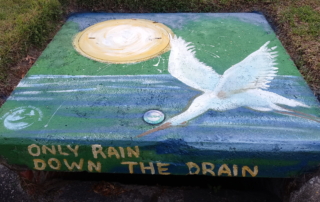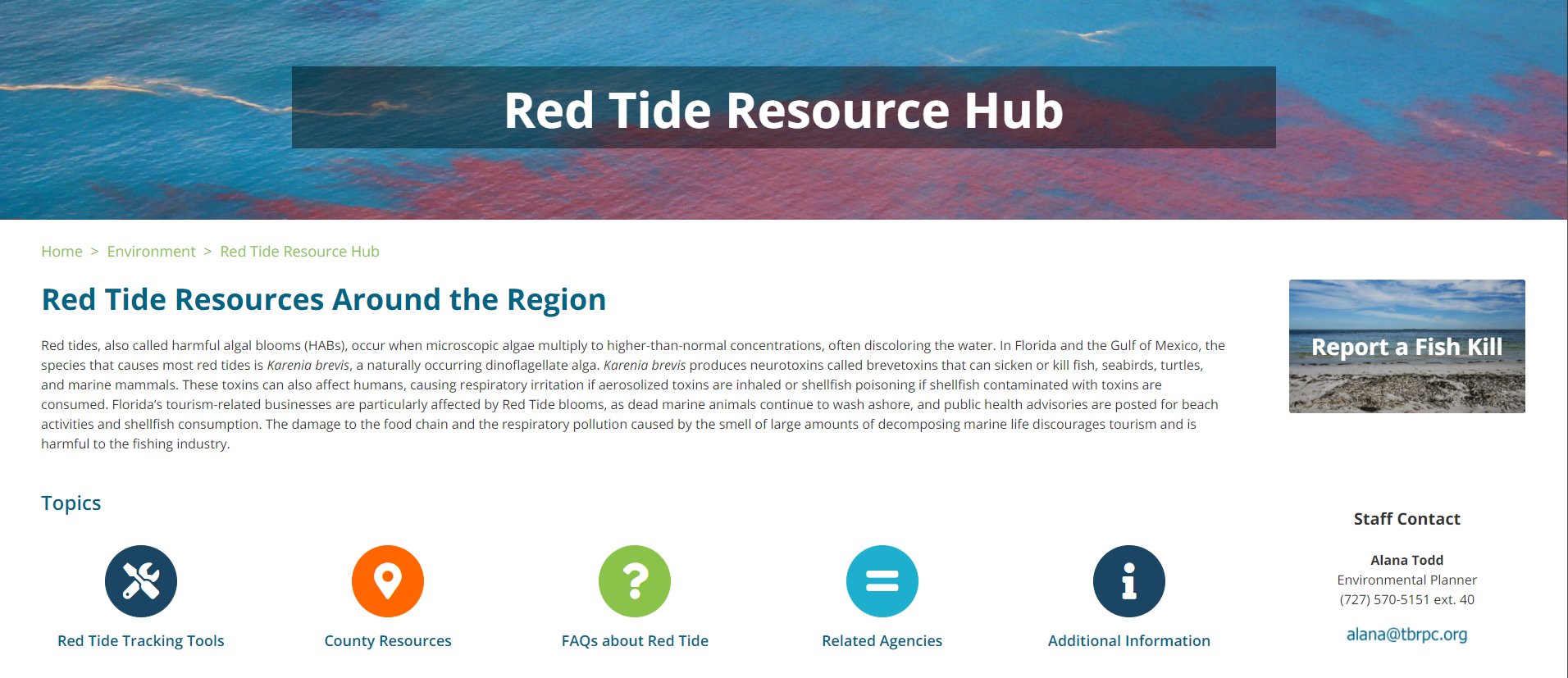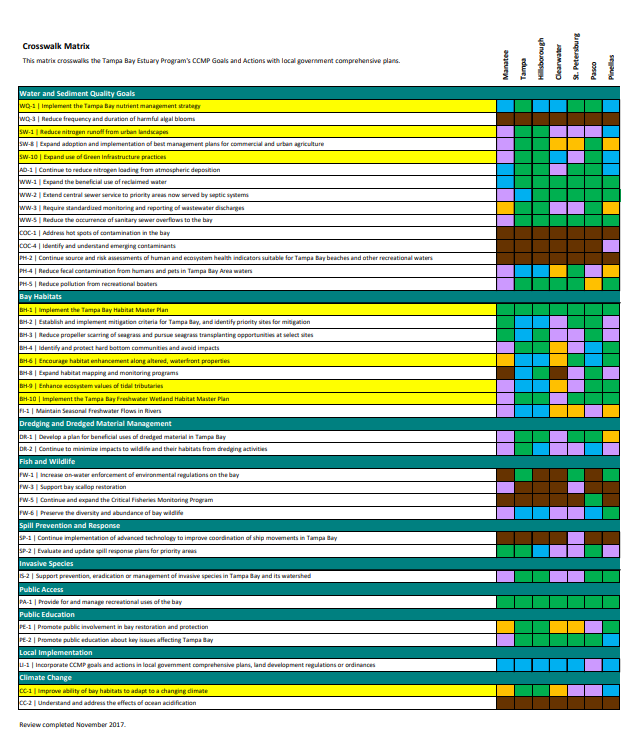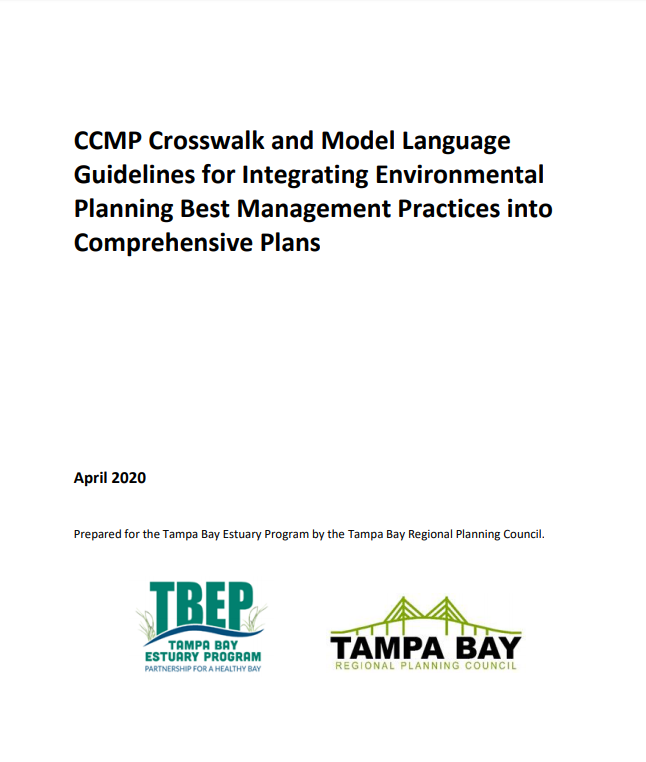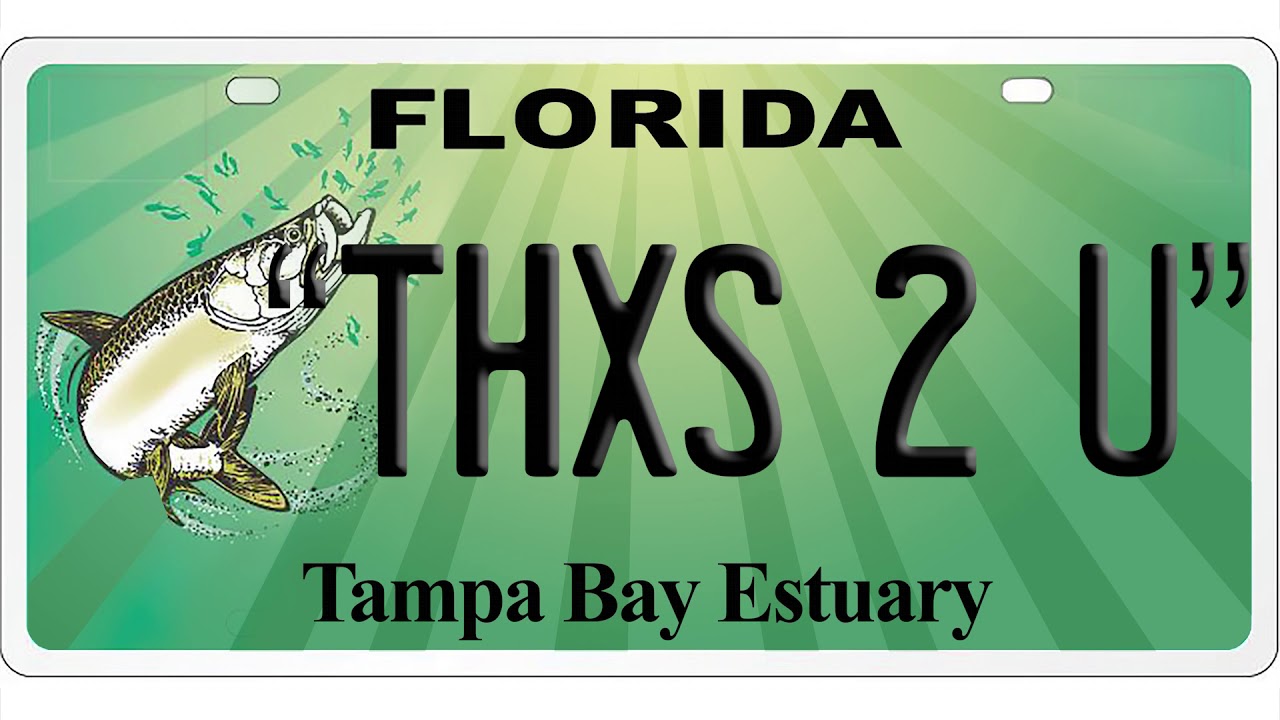ENVIRONMENT
ENVIRONMENT
ENVIRONMENT
Environmental Planning
TBRPC develops and implements programs in partnership with a variety of stakeholders to address the environmental needs and concerns of the Tampa Bay region.
The Environmental Planning program endeavors to protect and enhance our environment’s built and natural resources, including critical habitats and ecologically sensitive lands. Our staff lends their expertise to a range of initiatives promoting environmental stewardship and community engagement in our region’s natural places.
Topics
Program Highlights
OBJECTIVES
Environmental objectives of the TBRPC include:
- Provide a forum to collaboratively solve issues impacting the Bay and its environs.
- Serve as a regional forum for addressing emerging environmental issues affecting Tampa Bay, such as red tide, marine plastic and debris, and habitat protection.
- Support the goals of the Tampa Bay Estuary Program and the Southwest Florida Water Management District‘s Springs Initiatives.
- Provide input to the State and Federal legislatures on Tampa Bay-related issues and opportunities.
Tasks and activities to support these objectives include but are not limited to:
- Maintain and staff the Agency on Bay Management.
- Provide impartial review of projects that may involve or impact regionally significant natural resources; especially water supply resources.
- Continue participation in multi-jurisdictional committees to provide regional perspective and promote regionally significant resource protection.
- Continue to produce Bay Soundings, an environmental journal that provides objective information on issues affecting Tampa Bay, its watershed and the natural resources of the Tampa Bay region.
- Develop resources that advance the goals and principles of the Tampa Bay Estuary Program’s Comprehensive Conservation and Management Plan.
- Provide staff services to the FDOT stormwater public education program.
- Continue support of the Tarpon Tag specialty license plate.
BAY MANAGEMENT
BAY MANAGEMENT
Agency on Bay Management
Since 1985, the Agency on Bay Management has established itself as the regional forum for issues relating to Tampa Bay. It is a collaborative of all interests affecting or affected by Bay management and use decisions: commercial, industrial, political, recreational, regulatory and scientific groups as well as the public at large.
As the natural resources committee of TBRPC, it serves as a broad-based forum for open discussion of the myriad issues involving the estuary, and as a voice for protection, restoration and wise use of the Bay by the entire region. The Agency was primarily responsible for the institution of the Surface Water Management and Improvement Program in Florida, and designation of the Tampa Bay National Estuary Program.
ENERGY RESILIENCE
Clear Sky Tampa Bay
Developing a Resilience-Based Siting and Valuation Toolkit for Solar+Storage
Long-lasting power outages caused by hurricanes and other disasters have major impacts on communities and local economies. Leading organizations and energy agencies across the country are working to evaluate the role of solar energy and battery storage on specific buildings to improve local community resilience goals.
An innovative project, led by the Tampa Bay Regional Planning Council, has been selected by the U.S. Department of Energy’s National Renewable Energy Laboratory (NREL) to participate in a collaborative research effort to develop novel applications of solar energy. NREL is leading the Solar Energy Innovation Network with funding from the U.S. Department of Energy’s Solar Energy Technologies Office. NREL pursues fundamental research and development of renewable energy and energy efficiency technologies to transform the way we use energy.
STORMWATER
STORMWATER
Stormwater Management Public Education & Training Committee
Stormwater runoff is one of the largest nonpoint source pollutants to Tampa Bay, which can lead to the degradation of the region’s drinking water resources and valuable aquatic ecosystems. Each year the Tampa Bay Regional Planning Council, funded by the Florida Department of Transportation (FDOT), coordinates the Stormwater Public Education and Training Committee for District seven, which is comprised of staff in municipalities, counties, and non-profit organizations. The TBRPC Stormwater Management Public Education Committee meets four to six times a year to discuss nonpoint source pollution prevention education, define issues of common interest, and best practices for supporting the NPDES permitting requirements.
Stormwater Outreach & Education Funding
With financial support from the Florida Department of Transportation (FDOT), TBRPC manages a stormwater education funding opportunity that supports public involvement, education, and outreach efforts to improve the quality of stormwater runoff in the Tampa Bay region. Projects develop and implement creative public outreach programs and a variety of educational materials available for public use.
EDUCATION & RESOURCES
EDUCATION & RESOURCES
Bay Soundings – Tampa Bay’s Environmental News
Bay Soundings is an independent publication geared to complete and objective reporting on the challenges, programs, and successes involving the Tampa Bay estuary, its watershed, and the regional natural resources. Until 2002 TBRPC annually published the State of Tampa Bay Report, a compilation of reports on the wide variety of activities, programs and issues of the previous year. TBRPC replaced the State of Tampa Bay Report with the quarterly environmental journal – Bay Soundings.
Red Tide Resource Hub
This webpage is a compilation of information, monitoring tools, agency links, and other resources for red tide in the Tampa Bay Region. Red tides, also called harmful algal blooms (HABs), occur when microscopic algae multiply to higher-than-normal concentrations, often discoloring the water. Although more than 50 HAB species occur in the Gulf of Mexico, one of the most well-known species is Karenia brevis, the red tide organism. K. brevis produces brevetoxins capable of killing fish, birds and other marine animals. Brevetoxins may also cause health problems in humans, including respiratory irritation and Neurotoxic Shellfish Poisoning. Blooms of K. brevis also affect Florida’s economy, particularly coastal communities that rely on tourism. Visit the Resource Hub to learn more about red tide, its impacts, and how you can help.
CCMP Crosswalk and Model Language Guidebook
Effective planning for the Tampa Bay region calls for a whole-systems approach to estuary management. In an effort to improve the implementation of the Comprehensive Conservation Management Plan (CCMP), TBRPC partnered with Tampa Bay Estuary Program, and several local government stakeholders sought to develop guiding documents that enable communities to more easily incorporate estuary management considerations into the broader structure of comprehensive land use planning. By integrating policies which support estuary protection within elements of a community’s comprehensive plan, local governments can provide a basis for development decisions regionally. Learn more.
Tarpon Tag
You can help support bay restoration efforts by purchasing a Tampa Bay Estuary specialty license plate for just $17 per year. The Tarpon Tag is the only marine tag where all the funds raised stay in the Tampa Bay area. Revenues from the tag are returned to the local community in the form of funding assistance for the Bay Soundings online publication and Bay Mini-Grants to citizen groups, schools, and non-profit organizations. Since they were first introduced in 1999, nearly $2 million have supported eligible habitat restoration, pollution prevention, and environmental education projects. The Tampa Bay Estuary specialty license plate can be purchased in person at any Florida Tax Collector office or tag agency, by mail at your regular tag renewal time, or anytime by mail.



